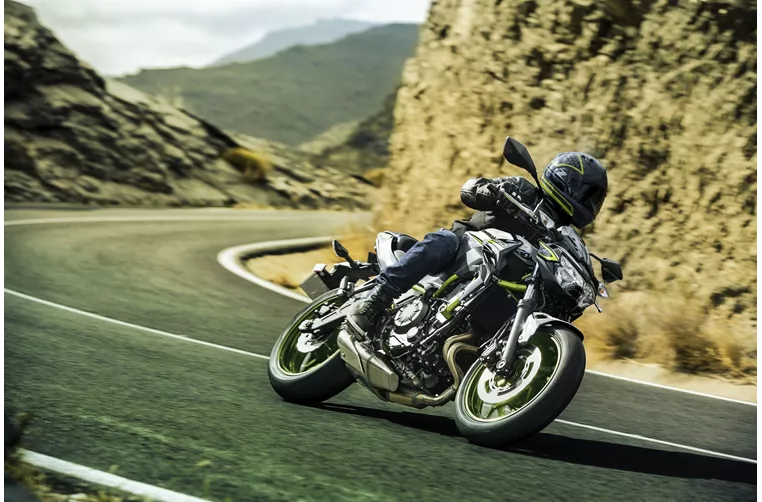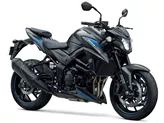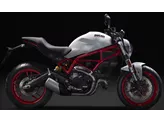Kawasaki Z900 2017 vs. Kawasaki Z650 2021

Kawasaki Z900 2017

Kawasaki Z650 2021
Overview - Kawasaki Z900 2017 vs Kawasaki Z650 2021
The Kawasaki Z900 model year 2017 and the Kawasaki Z650 model year 2021 are both naked bikes from Kawasaki, but they have some notable differences in terms of specifications and strengths.
Starting with the engine and drive train, the Kawasaki Z900 2017 is equipped with an in-line, 4-cylinder engine that produces 125.4 HP of power and 98.6 Nm of torque. On the other hand, the Kawasaki Z650 2021 features an in-line, 2-cylinder engine that generates 68.2 HP of power and 65.7 Nm of torque. The Z900 has a larger displacement of 948cc compared to the Z650's 649cc. This means that the Z900 offers more power and torque, making it a more high-performance option.
In terms of suspension, both bikes have a swing arm rear suspension with a monoshock absorber. However, the Z900 has an upside-down telescopic fork front suspension, while the Z650 has a regular telescopic fork front suspension. This difference in front suspension may result in a slightly different riding experience, with the Z900 potentially offering better handling and stability.
Both bikes have a steel frame, but the Z900 has a double cradle frame type, while the Z650 has a tubular frame type. The double cradle frame on the Z900 may provide better rigidity and stability, contributing to improved handling and control.

Kawasaki Z900 2017
When it comes to braking, both bikes have double disk front brakes with a diameter of 300mm. However, the Z900 has four-piston front brake calipers, while the Z650 has double-piston front brake calipers. This means that the Z900 may offer better braking performance and stopping power.
Both bikes are equipped with ABS as part of their advanced rider assistance systems, ensuring enhanced safety during braking.
In terms of dimensions and weights, the Z900 has a slightly wider front tire width of 120mm compared to the Z650's 120mm. The Z900 also has a larger rear tire width of 180mm compared to the Z650's 160mm. Both bikes have a 17-inch front and rear tire diameter. The Z900 has a longer wheelbase of 1450mm compared to the Z650's 1410mm. The seat height of the Z900 is 795mm, while the Z650 has a slightly lower seat height of 790mm. The Z900 is also slightly heavier, with a kerb weight of 210kg compared to the Z650's 187.1kg.
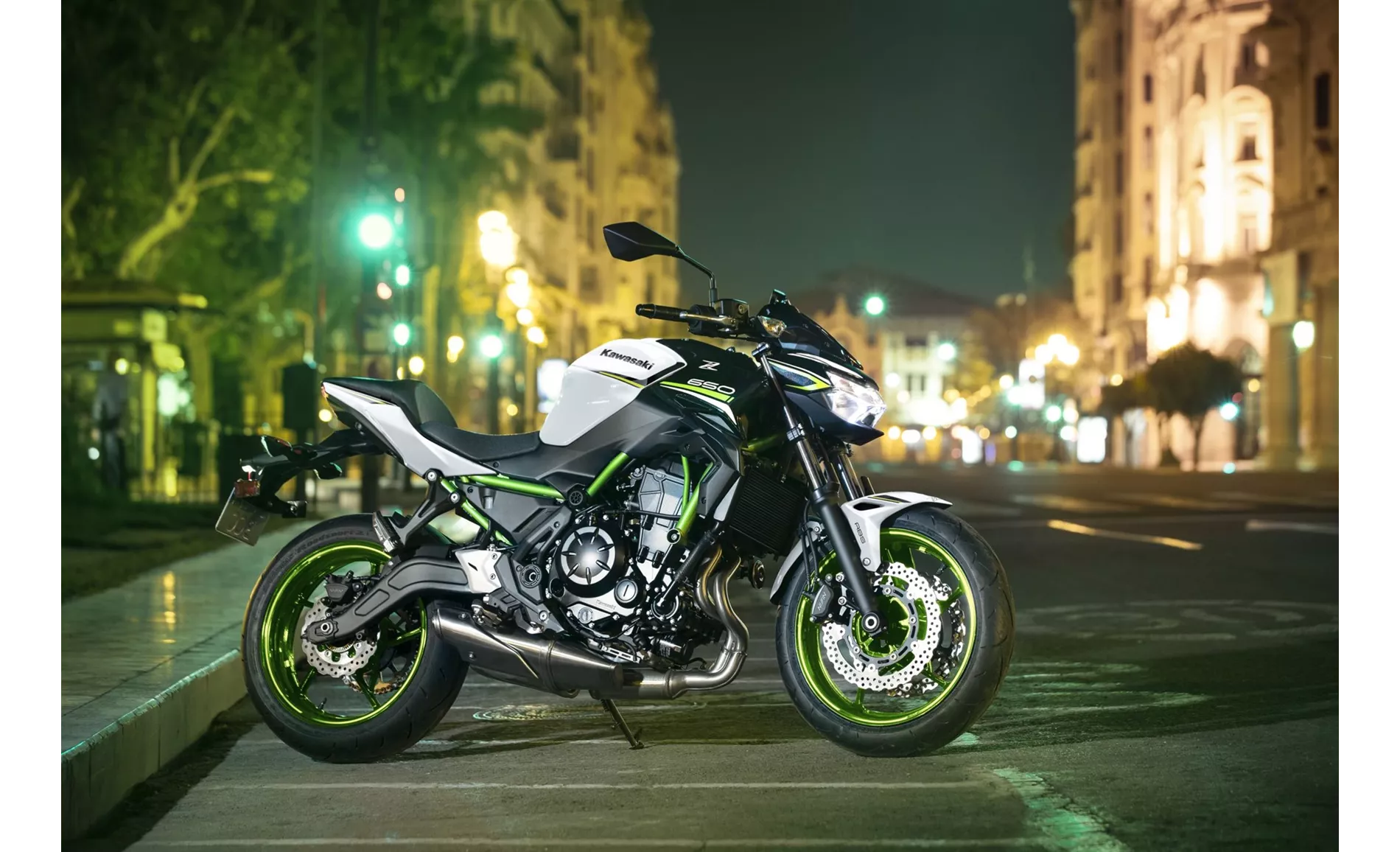
Kawasaki Z650 2021
In terms of strengths, the Z900 2017 is praised for its ingenious naked bike chassis, superb looks, and a responsive engine with well-balanced torque. It is also considered to offer a good balance between performance, price, and practicality.
On the other hand, the Z650 2021 is commended for its accessible two-cylinder engine, compact dimensions, and low seat height. It also features a stable chassis and a TFT display with connectivity, giving it a more modern and advanced feel. Additionally, the Z650 has a more grown-up look compared to its predecessor.
However, both bikes have their weaknesses. The Z900 2017 is criticized for its narrow knee angle, which may be uncomfortable for taller riders. It is recommended to order a different seat to address this issue. On the other hand, the Z650 2021 is said to have a lower adrenaline level in the saddle compared to its competition, suggesting that it may not provide the same level of excitement and thrill for riders seeking a more exhilarating experience.
In conclusion, while the Kawasaki Z900 2017 and the Kawasaki Z650 2021 are both naked bikes from Kawasaki, they have distinct differences in terms of specifications and strengths. The Z900 offers more power and torque, along with a more advanced front suspension and braking system. On the other hand, the Z650 is praised for its accessibility, compact dimensions, and modern features. Ultimately, the choice between the two will depend on the rider's preferences and priorities.
Technical Specifications Kawasaki Z900 2017 compared to Kawasaki Z650 2021
Pros and Cons in comparison
Pros and Cons in comparison
Kawasaki Z900 2017

An incredibly well-designed motorbike. A lot of test work and attention to detail went into it. It has exactly the right power, exactly the right chassis and exactly the right look. An all-round successful naked bike that will make you happy for a long time. If you like, you can ride it simply and faithfully, but if you want, you can also ride it really fast and it wheels like hell. Great!
Kawasaki Z650 2021
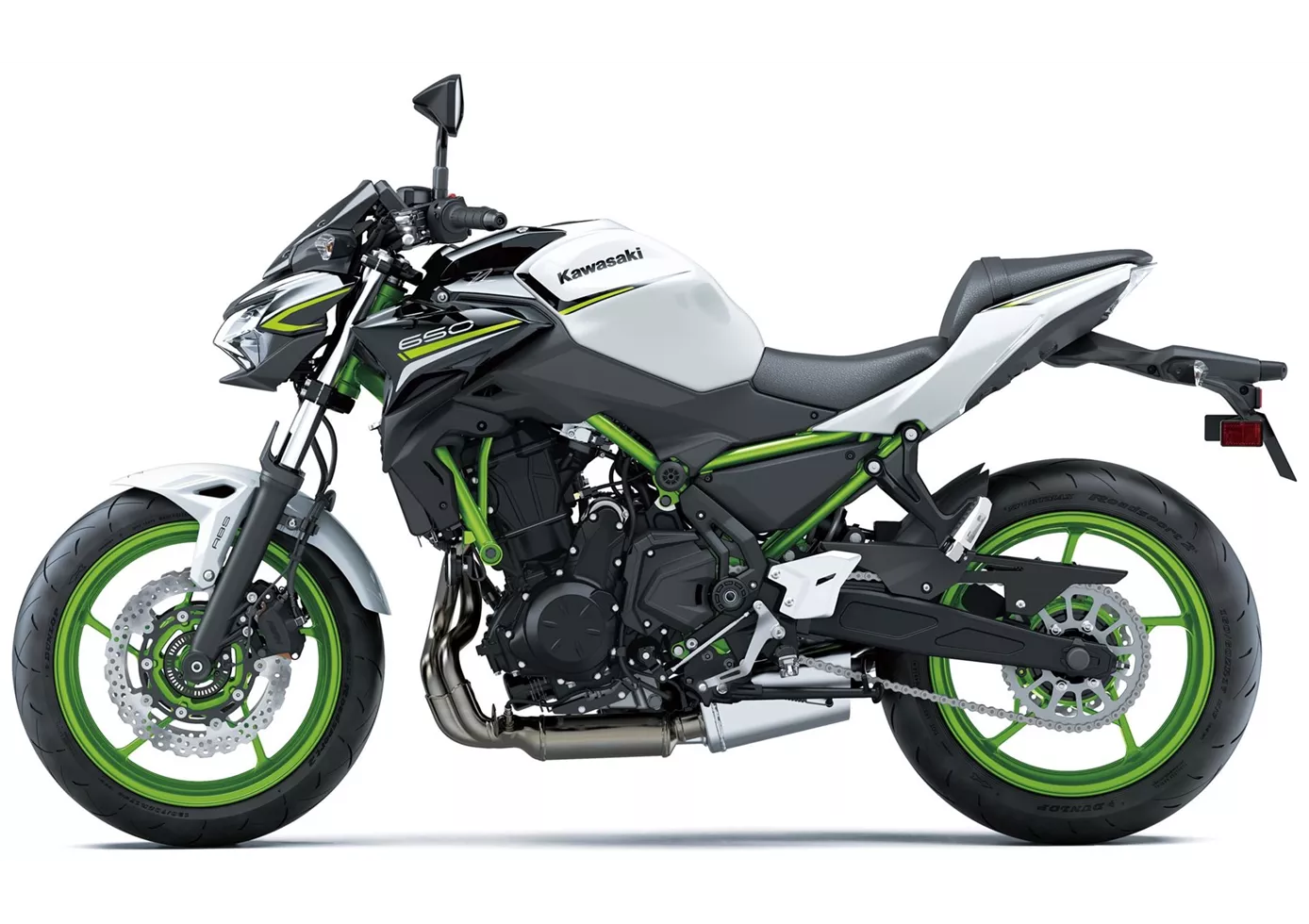
Even in 2021, the Kawasaki Z 650 stands for easy riding with great looks and good equipment. Both seat height and engine are very accessible and will give both experienced riders and newcomers a lot of pleasure. If you are looking for an honest naked bike without any big surprises, this is the bike for you. Due to its compact dimensions, however, you should try it out before buying and perhaps go for the raised seat.
Price Comparison Avarage Market Price Kawasaki Z900 vs Kawasaki Z650
There are a few key differences between a Kawasaki Z900 2017 and a Kawasaki Z650 2021. In terms of price, the actual average price of a Kawasaki Z900 2017 is about 34% higher. Compared to Kawasaki Z650 2021 there are more Kawasaki Z900 2017 bikes available on the 1000PS.de Marketplace, specifically 43 compared to 25. It takes less time to sell a Kawasaki Z900 with 85 days compared to 106 days for a Kawasaki Z650. Since model year 2017 1000PS.de editors have written 46 reviews for the Kawasaki Z900 and 31 reviews for the Kawasaki Z650 since model year 2017. The first review for the Kawasaki Z900 was published on 11/11/2016 and now has more than 93,200 views. This compares to more than 25,000 views for the first review on Kawasaki Z650 published on 08/11/2016.

